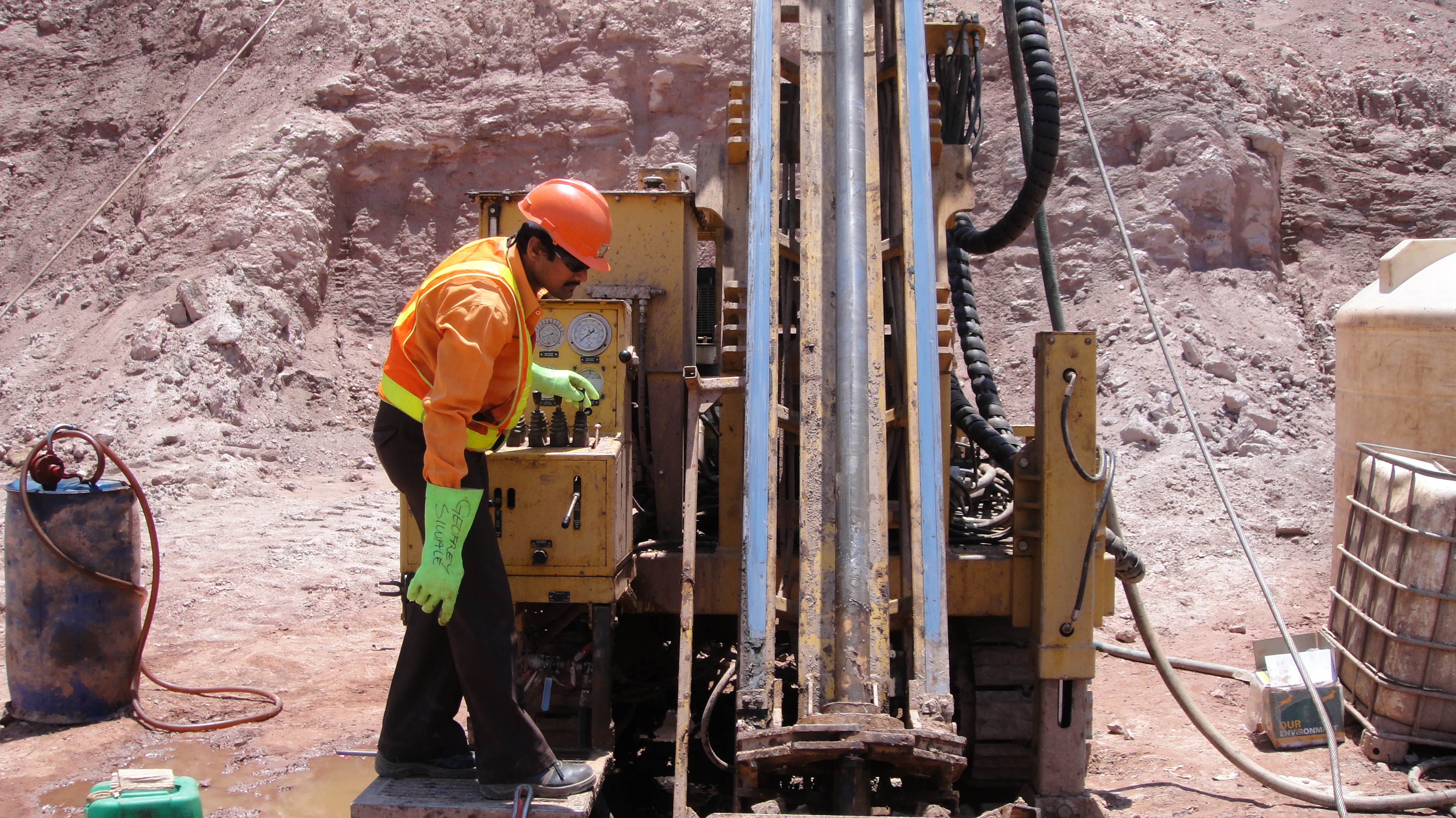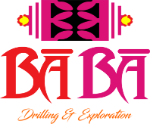Northmead, Lusaka - Zambia
P.O. Box 34128
Percussion Rotary Air Blast
RAB drilling is used most frequently in the mineral exploration industry. (This tool is also known as a Down-the-hole drill.) The drill uses a pneumatic reciprocating piston-driven "hammer" to energetically drive a heavy drill bit into the rock.
The drill bit is hollow, solid steel and has ~20 mm thick tungsten rods protruding from the steel matrix as "buttons".
The tungsten buttons are the cutting face of the bit. The cuttings are blown up the outside of the rods and collected at surface. Air or a combination of air and foam lift the cuttings.
RAB drilling is used primarily for mineral exploration, water bore drilling and blast-hole drilling in mines, as well as for other applications such as engineering, etc. RAB produces lower quality samples because the cuttings are blown up the outside of the rods and can be contaminated from contact with other rocks. RAB drilling at extreme depth, if it encounters water, may rapidly clog the outside of the hole with debris, precluding removal of drill cuttings from the hole. This can be counteracted, however, with the use of "stabilizers" also known as "reamers", which are large cylindrical pieces of steel attached to the drill string, and made to perfectly fit the size of the hole being drilled. These have sets of rollers on the side, usually with tungsten buttons, that constantly break down cuttings being pushed upwards.
The use of high-powered air compressors, which push 900-1150 cfm of air at 300-350 psi down the hole also ensures drilling of a deeper hole up to ~1250 m due to higher air pressure which pushes all rock cuttings and any water to the surface. This, of course, is all dependent on the density and weight of the rock being drilled, and on how worn the drill bit is.

Why Choose Us?
WE REALLY LOVE WHAT WE DO & OUR WORK ON EVERY PROJECT TRULY REFLECTS THAT..
With years of experience and knowledge behind our team, BDECL Services are experts in the application of dual wall reverse circulation methods. In extreme drilling conditions of this technique, our experience will offer the maximum sample recovery achievable. Major advantages of this include:
- Recovery of uncontaminated samples in high water bearing formation
- Faster penetration than standard rotary or core drilling
- Lower costs due to increased production
- Reduced bit and mud consumable costs
- No lost circulation even through fractures, voids and joints
- No surface casing as the outer pipe supports the bore hole while circulation is maintained internally.
- Straighter holes with flush joint pipe while drilling with RC.


VAST EXPERIENCE
Our Experience in Drilling & Exploration Services span over a period of 3 decades with provision of these services in different parts of the world

TECHNICAL KNOW-HOW
Our team comprises of individuals with technical knowledge and expertise that makes our workforce standout

MACHINERY & EQUIPMENT
We have world class renowned Machinery & Equipment. View our Fleet list for more information




